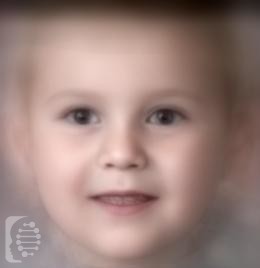What is Barth syndrome (BTHS)?
Barth syndrome is a rare genetic syndrome, a metabolic condition. There are 150 cases currently diagnosed worldwide, to date.
It affects mainly males, and most affected individuals have a reduced life expectancy as a result of the condition.
One of the main and most severe symptoms of this rare disease is an enlarged and weakened heart.
This syndrome is also known as:
3-methylglutaconic aciduria Type II; MGCA2 Barth syndrome BTHS; Cardioskeletal Myopathy With Neutropenia and Abnormal Mitochondria; Endocardial Fibroelastosis Familial primary; Endocardial fibroelastosis MGA, Type II; Mga2 X-linked endocardial fibrosis X-linked variety of endocardial fibroelastosis.
What gene change causes Barth syndrome (BTHS)?
Mutations in the TAFAZZIN gene are responsible for causing the syndrome. It is an X-linked recessive disorder.
Syndromes inherited in an X-linked recessive pattern generally only affect males. Males only have one X chromosome, and so one copy of a gene mutation on it causes the syndrome. Females, with two X chromosomes, only one of which will be mutated, are not likely to be affected.
What are the main symptoms of Barth syndrome (BTHS)?
One of the most serious symptoms of the syndrome is an enlarged and weakened heart. In most individuals, this subsequently leads to heart failure.
Muscle weakness and issues with mobility are also serious symptoms of the syndrome. Individuals also report fatigue during or after physical exercise or exertion.
Individuals with the syndrome also present with reduced numbers of white blood cells which triggers more frequent infections.
Low birth weight and continued slow growth after birth are common, followed by the development of short stature are all features of the syndrome.
Possible clinical traits/features:
Abnormality of neutrophils, Abnormality of the musculature, Abnormal endocardium morphology, X-linked recessive inheritance, Skeletal myopathy, Abnormal mitochondrial morphology, Recurrent infections in infancy and early childhood, Round face, Fatigue, Talipes equinovarus, Gait disturbance, Full cheeks, Granulocytopenia, Growth delay, Hypertrophic cardiomyopathy, Arrhythmia, 3-Methylglutaconic aciduria, Myopathic facies, Mandibular prognathia, Intermittent lactic acidemia, Neutropenia, Macrotia, Dilated cardiomyopathy, Congestive heart failure, Motor delay, Endocardial fibroelastosis, Deeply set eye, Exercise intolerance, Failure to thrive.
How is it diagnosed?
To find out if someone has a diagnosis of Barth syndrome, it is important to have a consultation and evaluation with a clinical genetic specialist. Specialists may also suggest specific genetic testing or other types of tests to help reach a diagnosis. FDNA’s AI technology can help speed up the diagnostic process by analyzing facial features and other health information.

